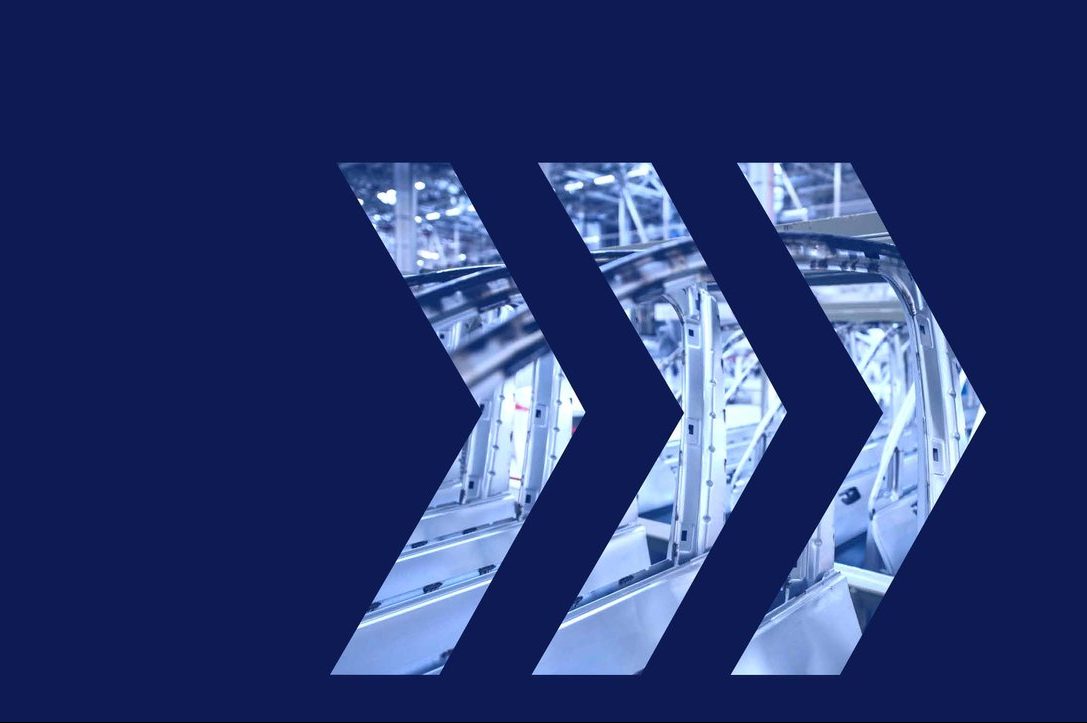124 results
Business Reinvention Across Three Horizons
Amid increased global competition and continued market turbulence, acting now when it comes to innovation, investment and sustainability will not only be crucial to meeting the future needs of customers and stakeholders, but could mean the difference between market dominance and imminent irrelevance.
Breakthrough technologiesESGInnovationSocial impactStrategyValues-Driven Growth and Businesses as Responsible Global Citizens
Businesses that have rethought their strategies with their purpose and values at the core are enjoying important payoffs. Growth plans built around purpose and values result in more motivated employees, better company performance and more loyal customers.
Environmental impactPurposeShaping cultureSocial impactStrategyChallenges and Opportunities of the Metaverse in Financial Services
As we begin to grow increasingly familiar with the concept of the metaverse, financial institutions are faced with multiple opportunities to maximize its potential – both for the end customer and for employees. While there will still be hurdles when incorporating the metaverse into commercial strategy, the value and competitive advantage of early adoption far outweigh the challenges.
ARBlockchainBreakthrough technologiesFinancial servicesMetaverseStrategyVRWhitepaperXRThe New Chief Experience Officer is an Applied Behavioral Scientist
In uncertain times, customer needs and priorities inevitably shift and evolve in ways that can induce even more uncertainty for CX teams. Creating a customer experience strategy capable of responding effectively to such changes is vital – and in order to do that, a scientific approach that focuses on behavior first is key.
CXDesign & UXDesign thinkingStrategyWorking practicesScenario Planning: A Tool for Navigating Future Turbulence
In the midst of uncertain times that only look set to continue, one thing is particularly crucial to an organization’s ability to navigate confidently: the ability – and agility – to envision and strategize for multiple possible futures.
Operational agilityOperational excellenceStrategyClear Skies Ahead: Capturing Maximum Value From Cloud
Roughly 20 years after its inception in the business world, cloud adoption is now all but universal, with almost every sizable company utilizing cloud services to some degree. However many of these companies still aren’t realizing its full potential, often due to the complexities of breaking away from their legacy systems. With the future of business predicted to take place on the cloud, such organizations face an increasing urgency to remain competitive by taking advantage of the full suite of cloud capabilities.
Breakthrough technologiesOperational excellenceStrategyWhitepaperTurn Cloud Adoption into a Competitive Advantage
Cloud technologies are widely lauded for their sustainable cost advantages and built-in business flexibility, meaning that a shift to the cloud is often a key IT priority in increasing an organization’s competitiveness. However, an understanding of the growing ecosystem of technologies is a prerequisite for avoiding pitfalls – and cloud adoption must be carefully integrated into a holistic business transformation strategy to succeed.
Breakthrough technologiesPartnershipsStrategyWhitepaperActing on Data and Digitalization
When times are uncertain and we don’t have the comfortable leeway we are used to, how can we use the basics to uncover the diamonds in the rock pile? How does data drive the digital agenda to overcome the perceived panacea of technology, and get to the answers which make a difference?
Data strategy & BIOperational agilityStrategyPerseverance, Servant Leadership and Achieving Agility in Uncertainty
In a global market defined by uncertainty and choppy economic headwinds, change isn’t always easy to absorb – but with an agile mindset, companies can achieve remarkable outcomes that turn challenges into success stories.
Employee wellbeingOperational agilityShaping cultureStrategyHow Organizations Can Accelerate Growth and Self-Fund Their Digital Journey
We’re experiencing a time of constant disruption. Global pandemics, geopolitical struggles and economic challenges have leaders looking for ways to move beyond merely surviving. How can businesses capitalize on constant change, transforming even when budgets are tight, finding talent is tough, and legacy systems can hold us back from innovating faster on behalf of customers?
Digital transformationOperational agilityOrganisational designPost-Covid workplaceStrategyNavigating M&A Post-Pandemic (And Why Culture and Values Matter)
Mergers and acquisitions remain a viable growth strategy for professional services firms, despite the current challenges – but successfully navigating these deals will require a different approach in a post-pandemic market.
FinanceOrganisational designShaping cultureStrategyTeam dynamicLeading with Empathy: How to Build High Impact Teams
In the wake of a pandemic that has reshaped countless aspects of life as we once knew it, it is clear that many of the ‘old models’ – of working, corporate culture, and especially leadership – are no longer fit for purpose. In this new landscape, where many of us have re-assessed our priorities and are taking care to focus more on our well-being, one leadership quality is more impactful than all others in maintaining employee engagement: empathy.
Operational agilityStrategyTeam dynamicWorking practicesHow to Turn Customer Experience into a Tailwind for Revenue Growth
With consumers able to choose between increasingly vast ranges of similarly-priced products and services, customer experience has become an important point of differentiation for businesses. If harnessed strategically, it can become a valuable source of revenue growth.
CXProcurementShaping cultureStrategyThe Evolving Role of the CFO: From Financial Anchor to Strategic Leader
As the business landscape grows ever more uncertain and disrupted, CFOs need to reinvent themselves so that their focus increasingly falls on fostering innovation and promoting adaptability, rather than solely on accounting, compliance and safeguarding assets. Those who can become comfortable in today’s climate of upheaval and change will discover new opportunities in what will be an increasingly key leadership role.
Corporate governanceESGFinanceOperational agilityStrategyAgility in Uncertainty: Surfing the Waves, Reaping the Rewards
For an enterprise to grow in uncertain times, it requires strategic approaches that are focused on seamless transformation – while deftly managing the gap between strategic intent and real-world implementation. This means using the right models and having the right people, because both need to align to ensure relevant and scalable transformation.
Operational agilityOperational excellenceStrategyTeam dynamicWorking practicesThe Race is On to Drive Drama Out of Digital
Amid today’s widespread economic turbulence and uncertainty across global markets, businesses are under pressure to build and maintain organizational resilience through digital transformation. But how should they do this without getting swept up in the drama of external disruption?
Data strategy & BIOrganisational designStrategyWorking practicesLeadership First, Location Second
No matter how you feel about it, remote work is here to stay. As leaders, how confident and comfortable you are with this shift will depend on your own experiences, background, and even your seniority. There are very real changes involved in working remotely or in hybrid teams, but there is good news: when we take the time to be intentional, the proper courses of action become clear.
Hybrid workingPost-Covid workplaceShaping cultureStrategyTrustWhy Now is a Moment That Matters
The game has changed. Our role as leaders in this time of unprecedented change is to look outside ourselves – to consider the needs and experiences of our teams, customers and communities. When we do that, we will serve everyone – including ourselves – far better.
Hybrid workingOrganisational designStrategyTeam dynamicHow to Make the New, Hyper-Connected World of Work Work for Everyone
Successful leadership in today’s world of hybrid work requires a reset in how we manage and empower our teams. What we have lost to remote work – those watercooler moments – must be reinstated. Leaders should focus on facilitating social connections and creating a fertile breeding ground for innovation by establishing the structures for employees to network and collaborate across boundaries.
EXHybrid workingOperational agilityShaping cultureStrategyWorking practicesNew Work: Is the Great Resignation Finally Making Us Think Differently?
Few companies have fully grasped the reality of today’s New Work challenges. The majority seem content to wait and see – but this complacency could mean the difference between moving ahead and lagging behind. There is a lot at stake, and to make a success of the new world of work leaders need to move on from technology and team leadership and focus on strategy at a higher level.
Hybrid workingShaping cultureStrategyTalent managementWorking practicesConnecting Your Hybrid Workforce
Recent research from NTT showed that over 90% of organizations recognize the value of employee experience to their strategy, or as a crucial strategic differentiator, but just 25% fully agree that the value of EX is understood and embraced across the enterprise. Forward-looking organizations have moved ahead with secure-by-design digital transformation to enable hybrid working – and are reaping significant rewards. But can leaders, managers and employees agree on what the future of work should look like?
ESGEXHybrid workingOrganisational designStrategyWhitepaperInclusion and Diversity Matter, and Here’s Why
Leaders today face a bewildering amount of change and uncertainty. They are expected to guide others, even when they themselves are unsure of the way forward. Yet diversity, which is often perceived as a problem, is actually a free resource to help leaders to de-risk and calibrate their decision-making.
Diversity, equity & inclusionShaping cultureStrategyTeam dynamicResponsible Freedom: Creating the Connected Future Workplace
The pandemic forced businesses and organizations to abandon the physical office and adopt remote working. But with Covid now seemingly behind us, and hybrid practices well-established, is there a danger that without face-to-face interaction, organizations will lose the very thing that keeps them connected?
Hybrid workingPost-Covid workplaceShaping cultureStrategyTalent managementThriving When the “Authorities” No Longer Know What to Do
Executives everywhere are having to re-evaluate their purpose and re-establish their resolve, building a new set of muscles to lead. True leadership is being the author of your own story, whilst staying true to your values. Holding on to that central purpose, that constant in a sea of changes, will allow leaders to thrive, even as the rulebooks are being rewritten before our eyes.
PurposeShaping cultureStrategyEarning Trust and Customer Capital Through Integrity
Trust is what defines a business. To gain the utmost respect of not just their customers, but their employees, partners and communities, companies must earn their trust. But earning high levels of trust from people external to the business must begin with an internal commitment to integrity.
CXSocial impactStrategyTrustWhy Trust is Stuck in the U-Bend
We are facing a continuing erosion of trust in the institutions of capitalism, globalization and democracy. But with a focus on regeneration, instead of just responsibility and resilience, businesses can plot a course through this period of disruption and systemic change.
Environmental impactESGSocial impactStrategyTrustTrust: The New Currency of Business
In a world where skepticism and misinformation have now become the default, trust has become the new currency for business. And those companies that know how to spend it well can create a competitive advantage by making sure that their actions speak louder than words.
PurposeSecurityShaping cultureStrategyTalent managementTrustGender Equality – The New Leadership Advantage
In today’s fast-changing markets, where adaptability is key to success, traditional leadership thinking is too rigid to effectively respond to unexpected events. What’s needed instead at a senior level is a vibrant mix of thought and opinions that can deliver creative solutions to unexpected events. This means that organizations with greater gender balance at the highest level are much better equipped to remain competitive.
Diversity, equity & inclusionEXOrganisational designShaping cultureStrategyTalent managementWorking practicesWelcome to the sixth issue of CXO Magazine
Today, organizations are harnessing rapid advances in technology and cutting-edge innovation to enable success in the marketplace. Yet amid the fast-paced drive to meet customer and business goals, leaders are realizing that, in addition to the speed to deliver, there must be a constant, unwavering focus on building and maintaining trust.
Issue welcomeStrategyTrustWelcome LettersTX Marks the Spot: The Strategic Value of Total Experience
The past ten years have seen the evolution of expectations, from what customers expect from brands and what employees expect from employers, to what the organisation expects from itself, its own culture and reputation. Combined, these expectations define the concept of the Total Experience (TX) – a concept that’s reshaping corporate strategy, interaction and engagement.
CXEXStrategyTrustThe Compassionate Corporation: A Pragmatic Approach to People-Centric Transformation
How can businesses change and grow in a way that’s both practical for the organisation and empathetic to the individuals that make it up? The first step is understanding that people are always the drivers, as well as the agents, of change. Leaders must now rethink their growth strategy and take a humanity-meets-pragmatism approach to driving their business forward.
Data strategy & BIEmployee wellbeingOrganisational designStrategyThree Questions Every CEO Should Ask About Automation
Most descriptions of the role automation plays in an organisation are wrong. Automation is not just about alleviating mundane tasks. It’s tied to the cultural and workplace transformation we’re experiencing today because it’s about enhancing the human experience, both for our customers and our employees.
AutomationStrategyWorking practicesWhite Paper: The Road To Smarter Manufacturing
Manufacturers are dealing with fundamental changes in every part of their operations, with a growing demand for higher product customisation, making traditional manufacturing processes no longer fit for purpose. It’s time for manufacturing to undergo a new stage in its transformation: Hyper Automation.
Artificial intelligenceBreakthrough technologiesIoTStrategyWhitepaperIntelligent Organisations: A Systemic Approach
Organisations can be designed to behave intelligently and sensitively, and indeed they must if they are to master the complexity of our current environment. Drawing on Systems Theory and Cybernetics, we can understand the prerequisites of organisational intelligence, and create the conditions for our organisations to flourish.
Operational agilityOrganisational designStrategyWhite Paper : History Made Faster: Why Automation Often Fails, But Doesn’t Have To
Business norms have been swept away by the Covid-19 pandemic; because of this disruption, change had to go deeper and faster than conventionally thought possible. Instead of “returning to normal”, we must now refocus technologies, working practices and business models to create an environment that will be starkly different to the old ways of working.
AutomationOperational agilityStrategyWhitepaperHow to implement an automation strategy that actually works
Leaders want their automation strategy to deliver long-lasting value and an attractive ROI. To achieve this, you need a data-driven strategy and a unified IT landscape, plus the courage to forge into new automation territories.
AutomationOperational excellenceStrategyDriving Intelligence With an Automation Strategy That’s Right for Your Business
Instead of allowing technology to drive business decision-making, intelligent leaders must thoroughly examine how automation and other market-changing technologies can best complement their business strategy – not define it.
AutomationData strategy & BIDesign thinkingStrategyAdaptive, Diverse and Cyber-Effective: The Elements of an Intelligent Organisation
We need to rethink the organisation. We must break from the traps of historic convention, stop managing the wrong things and embrace an adaptive synthesis of people, behaviours and processes enabled by effective information. In doing so, intelligent organisations will deliver greater value to all stakeholders.
Organisational designStrategyTeam dynamicWorking practices















































